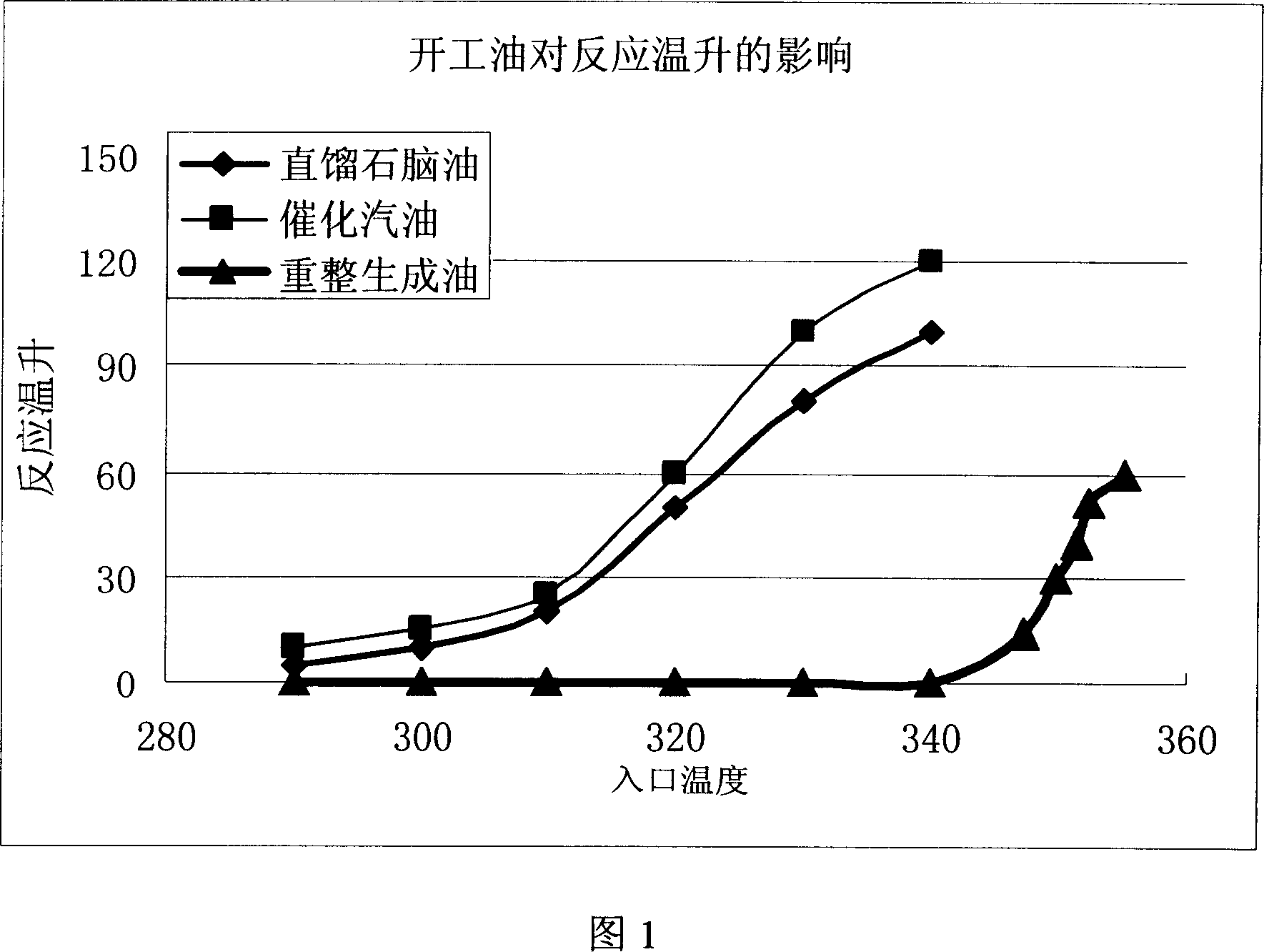Method for FCC gasoline proceeding hydrodesulphurization and olefin removal
A gasoline hydrogenation and gasoline technology, applied in the petroleum industry, refined hydrocarbon oil, etc., can solve the problems of large heat release and difficult control, and achieve the effects of improving service life, reducing carbon deposits, and reducing carbon deposits
- Summary
- Abstract
- Description
- Claims
- Application Information
AI Technical Summary
Problems solved by technology
Method used
Image
Examples
Embodiment 1
[0025] In Example 1, three different raw materials were selected as sulfurized oil, and the gasoline reforming catalyst was MQ-A.
[0026] The vulcanization conditions and process are:
[0027] Vulcanization conditions
[0028] High partial pressure: 3.4MPa; volumetric space velocity: 2.0h -1 ; Hydrogen oil volume ratio: 400; Circulating hydrogen purity: 70v%; Vulcanized oil: reformed oil; Vulcanized agent: C 2 h 6 S 2 ; Final vulcanization temperature: 340°C.
[0029] The vulcanization process is as follows:
[0030] After the reactor inlet temperature rises to 150°C, start the feed pump, and the volumetric space velocity is 2.0h -1 Feed vulcanized oil into the system, carry out closed circuit circulation of vulcanized oil, and start injecting C into the vulcanized oil at a constant speed 2 h 6 S 2 , C 2 h 6 S 2 The content in vulcanized oil is 4%, and the temperature is constant for 3 hours. Raise the inlet temperature of the reactor to 230° C. at a heating rate...
Embodiment 2
[0032] In Example 2, see Table 3 for the operation results and catalyst carbon deposits after switching to catalytically cracked gasoline with three starting oils. The process conditions are: inlet temperature 340°C, reaction pressure 3.5MPa, liquid hourly volume space velocity 2h -1 , The volume ratio of hydrogen to oil is 400:1.
[0033] Table 3 The reaction results of three kinds of start-up oils after switching to FCC gasoline
[0034] Start oil name
[0035] It can be seen from the reaction results after the three kinds of starting oils are switched to catalytic cracked gasoline that due to the low carbon deposits in the reformed oil, there is little difference in the various indicators of the products after 500-2000 hours; the catalyst carbon deposits of the other two starting oils are high , affecting the activity and stability of the catalyst.
Embodiment 3
[0036] In Example 3, the selective reforming oil produced by the MQ-B and MQ-C catalysts was used as the start-up oil. The vulcanization process was the same as in Example 1, and the process conditions were the same as in Example 2. Table 4 shows the operation results and the amount of carbon deposited on the catalyst.
[0037] Table 4 Reaction results of FCC gasoline treated with MQ-B and MQ-C catalysts
[0038] Start oil name
PUM
 Login to View More
Login to View More Abstract
Description
Claims
Application Information
 Login to View More
Login to View More - R&D
- Intellectual Property
- Life Sciences
- Materials
- Tech Scout
- Unparalleled Data Quality
- Higher Quality Content
- 60% Fewer Hallucinations
Browse by: Latest US Patents, China's latest patents, Technical Efficacy Thesaurus, Application Domain, Technology Topic, Popular Technical Reports.
© 2025 PatSnap. All rights reserved.Legal|Privacy policy|Modern Slavery Act Transparency Statement|Sitemap|About US| Contact US: help@patsnap.com

